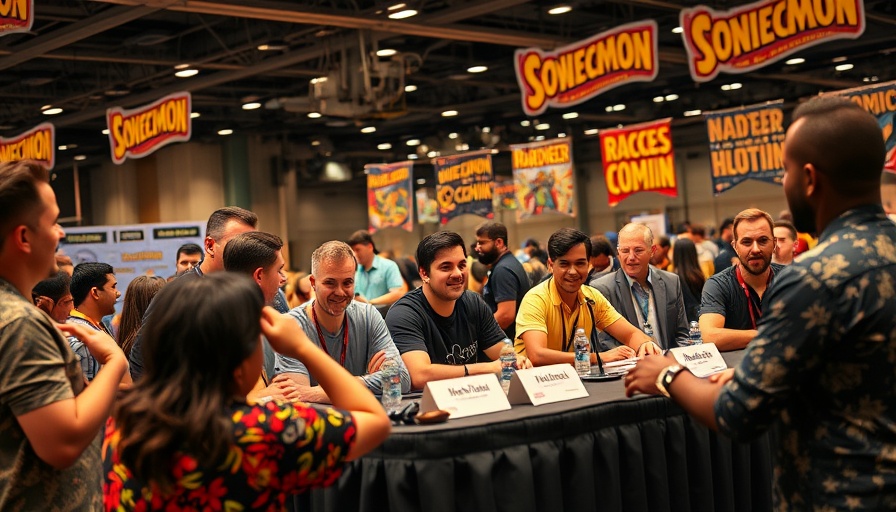
A Revolutionary Take on Zombies: The Birth of Queens of the Dead
In the realm of horror cinema, few legacies are as iconic as that of George A. Romero, hailed as the father of the modern zombie film. His daughter, Tina Romero, steps into this legacy with her directorial debut, Queens of the Dead, set to premiere at the Tribeca Film Festival on June 7. This film infuses the zombie genre with a fresh perspective, focusing on the LGBTQ+ community amidst a backdrop of horror.
Bridging Generations and Genres
Tina Romero has stated, "I am his kid. There’s no denying it," embodying the depth of her father's influence on her work. Queens of the Dead is not merely a homage; it's a spirited interpretation that honors Romero's legacy while forging its own path. She incorporates Easter eggs and nods to her father’s iconic draws in filmmaking, such as cameos from Tom Savini and Gaylen Ross, creating a bridge between generations in cinema.
Unpacking the Social Commentary Embedded in Horror
In her exploration of the zombie apocalypse, Romero emphasizes, "The zombie apocalypse is such a rich sandbox to play in when it comes to social commentary." This commentary reflects the struggles within the queer community, which she artfully parallels with the themes of survival and choice inherent in zombie narratives. The film’s plot revolves around a drag show severely disrupted by an undead uprising, serving as a metaphor for the challenges faced in queer nightlife.
Inspirational Origins: The Genesis of an Idea
The film's genesis is rooted in real social issues within the party scene, highlighted by a manifesto that questioned the community's propensity to “devour its own.” This profound notion served as the lightning bolt for Romero, sparking her creative drive to address these real-world problems through the lens of horror and comedy. As she said, "It’s time that we get to have a big gay zombie movie," demonstrating a demand for inclusivity in genre films.
The Queer Horror Renaissance: An Emerging Trend
Romero's debut reflects a broader trend in cinema where LGBTQ+ narratives are increasingly embraced within popular genres, particularly horror. Recent films have shown that horror can be a powerful medium through which underrepresented voices can express their realities. This cultural shift is vital for broadening the portrayal of issues relevant to marginalized communities.
Why This Film Matters to Audiences Immediately
By melding queerness with horror, Tina Romero appeals to audiences who crave stories that reflect their experiences while still delivering entertainment. Queens of the Dead promises to not only entertain but also resonate emotionally, breaking new ground in a traditionally male-dominated genre. The film exemplifies a growing movement of intersectionality in media, showcasing the importance of diverse representations.
Future Predictions: What Lies Ahead for Queer Films
As queer representation in mainstream cinema becomes less tokenistic and more nuanced, films like Queens of the Dead could lead the charge, inspiring a new wave of filmmakers to embrace diverse narratives. This could pave the way for significant cultural shifts, allowing for stories highlighting intersectionality to flourish in horror, creating vibrant dialogues surrounding identity, acceptance, and societal commentary.
Pushing the Boundaries of Genre
Tina Romero's journey symbolizes a challenge to genre norms; while traditional horror often leans into terror and despair, her film seeks to inject lightness and humor into the undead chaos. With her father's encouragement, she pushes boundaries, showcasing that horror can be both a space for fright and a platform for advocacy.
As Queens of the Dead makes its way through the film festival circuit, it is clear that the blend of cultural and societal relevance with horror will not only resonate with viewers but also redefine the landscape of genre filmmaking. This emergence of queer horror represents a burgeoning avenue that, backed by classics like Romero’s works, may flourish in the coming years.
 Add Row
Add Row  Add
Add 




Write A Comment